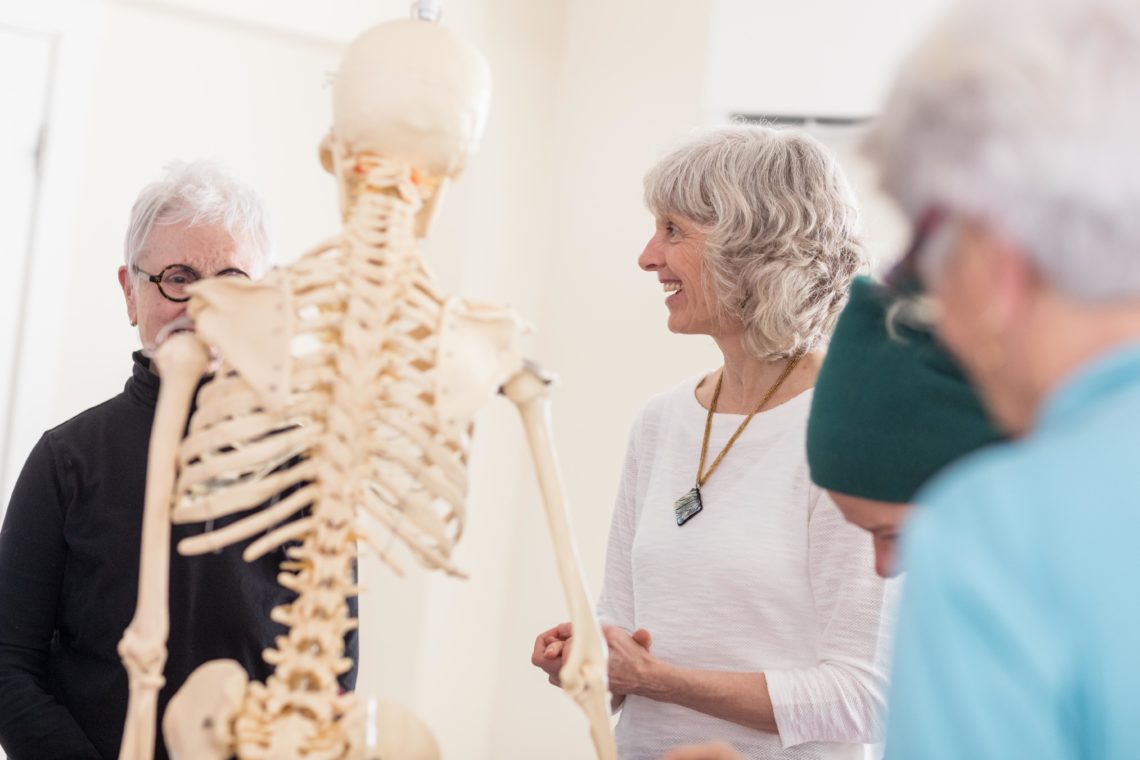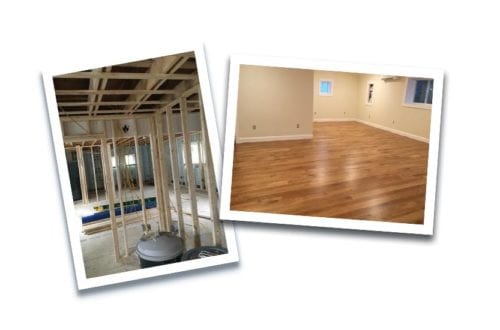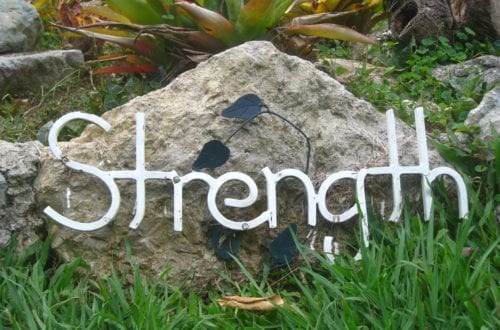
A Bit of Anatomy
Muscles attach to at least two different bones.
Tendons attach a muscle to a bone.
Ligaments attach one bone to another bone.
Ligaments help keep the joints from moving beyond their joint surfaces.
Tendons help move the joint when its muscle contracts.
Muscles, ligaments and tendons have receptors that provide sensory information to us. That is, we get feedback from our body giving us specific information.
Here are a few descriptions of those receptors and how we know what they are telling us and how best to use that information. You may have heard of them in your classes or books or through your friends or practitioners, even in the news.
Proprioceptors
- Located in muscles, tendons and ligaments.
- When stimulated, they provide us information through a process called proprioception.
- They let us know where our body is in space.
Are we standing, sitting or lying down?
When we are lying on our side, is one shoulder more forward or back?
Is one knee more forward than the other? - We can draw comparisons between different body parts because of the proprioceptors.
When we are walking, which leg is in front, which arm is in front? - The proprioceptors are involved in balance by helping maintain our position in space. That is, they help the nervous system keep us upright and not fall.
Muscle Spindles
- Located in muscles and at the junction between muscle and tendon.
- Are considered a proprioceptor, but are also responsible for detecting movement of a muscle, not just joint position.
- The stimulation of these receptors allows us to sense movement: reaching for the phone, kicking a ball, playing the piano. This is called kinesthesia, the ability to detect movement in action.
Nociceptors
- Located in muscles, tendons, ligaments, skin and organs.
- Are stimulated by a noxious-unpleasant or unwanted- stimulus, either chemical, mechanical or thermal.
- These receptors warn us in order to prevent damage to the tissues or to let us know if damage has occurred.
The continual orchestration between the above receptors (plus all the other ones that I haven’t mentioned in this post) in relation to the rest of ourselves allows us to do what we do. We also get feedback when it doesn’t feel good or when we aren’t quite able to do what we want or if damage has occurred.
We can develop our ability to “listen” to the information the receptors are giving us. We can use that information to find ease, to decrease tension, to re-organize ourselves after an injury or insult.
How do we do that?
By slowing down, by bringing our attention inward, by noticing changes and differences.
What can you do right now?
What holds you up? That is, what is your sense of support?
Can you get more comfortable? How do you do that? Imagine it? Settle in? Cultivate a feeling of groundedness? Or make an adjustment or change in your position?
Each moment that you bring your attention inward and notice, you are supporting the work of your receptors. You are letting the messages come into awareness, into consciousness. In the process, you are refining the messages between your tissues and the environment. Each time that you make a smoother movement, a more satisfying interaction between your inner self and your outer world, you are improving the process.
As you improve the process, what would you like to improve? Can you imagine something changing that you may not have felt was possible? Can you begin with an image or a dream of that possibility? It all starts right here, right now…




